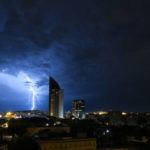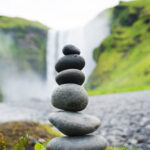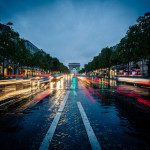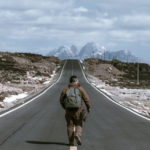It can sometimes be difficult to photograph unique and creative images when shooting nature and wildlife, especially for photographers just getting started. There are a lot of technical and creative decisions to be made that may not be apparent. Take a look at the quick video clip below of renowned nature photographer Jay Dickman, as he shares some of the pointers and tricks he has accumulated throughout his extensive and successful career:
Master Shutter Speed for More Creative Nature Photography
Using his trusty Olympus OM-D E-M1, Jay Dickman explains how to use various shutter speeds to create stunning wildlife images such as the below. By using a slower shutter speed, Dickman is able to create a soft water effect, a trick which also works when trying to show movement in wildlife. For example, using a slightly slower shutter speed when photographing a hummingbird, you can create a photograph with motion blur of the bird’s rapidly moving wings. (Via PetaPixel)

A slow shutter speed (2.5 secs) was used to give the water a soft look.
Remember, when taking photos with a slower shutter speed, it’s recommended you use a tripod at any speed slower than about 1/60 of a second. This will help ensure the non-moving parts of the photograph are sharp.

Here is the same composition with a faster shutter speed (1/400 sec).
Alternatively, using a faster shutter speed will “freeze” the motion within the photograph, giving a bird’s wings, or moving water, a sharper look.
Experimenting with panning brings an artistic element to your photos of moving animals.

Pan along with animals as they run for more interesting photos that imply motion.
Other Tips for Improving Your Wildlife Photography
- Have patience. Dickman points out that some days will be better than others in terms of finding things to photograph. Since we cannot control nature and what animals will happen to cross our paths that day, Dickman encourage photographers to not get frustrated if they go an entire day without seeing something of interest.
- Use back button auto-focus. Change your camera’s settings so that you focus using the AF button on the back of your camera. This lets you quickly change focus without affecting other camera settings.
- Go wide. When photographing fast-moving subjects, like birds, use a wider focal length so you have more room to capture the bird in flight.

Go wide and use back button focus for sharp photos of birds.
- Practice close to home. Go to the park and photograph your dog or children playing soccer so that you’re ready and know how your camera works before you go out on an expensive trip.
“It’s a dance you’re going through. You trying to let everything come together so you have the exposure down, the focus down, and you get the movement.”
Like This Article?
Don't Miss The Next One!
Join over 100,000 photographers of all experience levels who receive our free photography tips and articles to stay current:






Leave a Reply